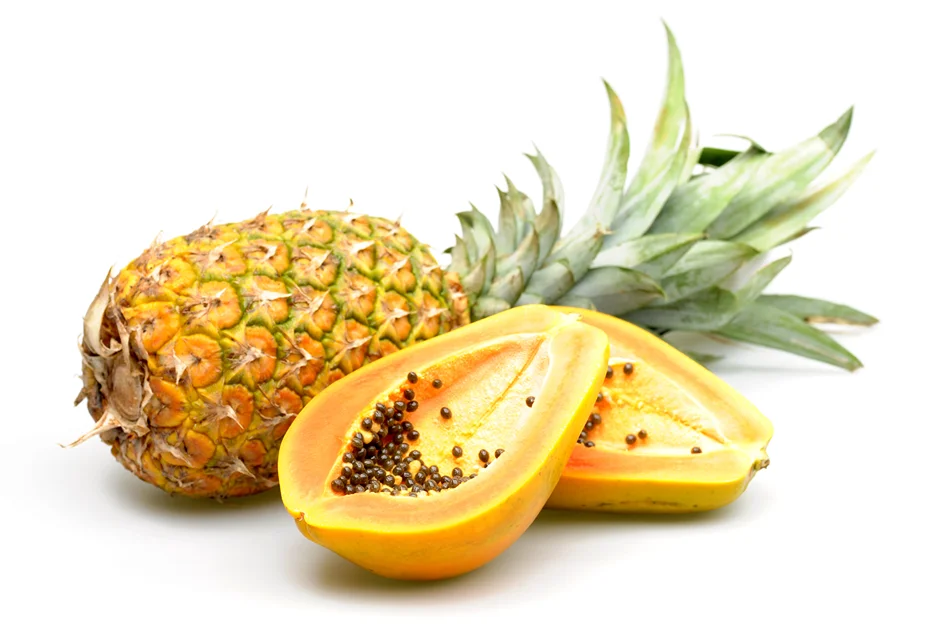Investigating the Potential of Systemic Enzymes in Regulating DAO Levels
As we begin this journey through the intricate world of enzymes, it’s like piecing together a complex puzzle. But fear not! We’re here to untangle the web and shed light on the crucial roles enzymes play in our bodies, particularly focusing on systemic enzymes and their relationship with DAO deficiency.
DAO: An Integral Enzyme for Histamine Regulation
Diamine oxidase (DAO) is a critical enzyme predominantly produced in the gut, kidneys, thymus, and placenta. DAO’s primary function is to metabolize and neutralize dietary histamine, a biogenic amine involved in local immune responses and physiological functions in the gut. By breaking down histamine, DAO helps maintain a healthy balance of histamine levels in our bodies, preventing the undesirable effects of histamine overload.
Manifestations of DAO Deficiency
When DAO production is insufficient, or its activity is hindered, the body struggles to metabolize histamine efficiently. This DAO deficiency results in an excess of histamine circulating in the body, leading to a condition known as histamine intolerance.
The symptoms of histamine intolerance can be varied and wide-ranging, affecting multiple organ systems. They include:
| Organ System | Symptoms |
| Digestive System | Abdominal cramps, chronic diarrhea, bloating |
| Skin | Hives, flushing, itchy skin, eczema |
| Respiratory System | Nasal congestion, sneezing, difficulty breathing |
| Cardiovascular System | Irregular heart rhythm, low blood pressure |
| Nervous System | Anxiety, depression, sleep disorders, migraines |
Factors Influencing Low DAO Levels

Several factors can contribute to low DAO levels, including:
- Genetic Predisposition: Certain individuals may genetically produce less DAO.
- Gut Health: Since DAO is produced in the gut, any disruption to gut health can potentially affect DAO levels. This includes conditions like leaky gut syndrome, small intestinal bacterial overgrowth (SIBO), and inflammatory bowel disease.
- Diet: Consumption of histamine-rich foods and drinks can overwhelm the DAO enzyme, causing a buildup of histamine.
- Medications: Certain drugs, such as non-steroidal anti-inflammatory drugs (NSAIDs), antidepressants, and some antibiotics, can inhibit DAO function.
- Alcohol: Alcohol can block DAO function and also increase histamine production, leading to increased histamine levels.
- Stress and Hormones: Chronic stress can impact gut health and, in turn, DAO production. Some hormones, like estrogen, can also inhibit DAO.
Understanding DAO and the factors that influence its levels is key to managing histamine intolerance and maintaining overall health. It’s crucial to consult with a healthcare provider for accurate diagnosis and treatment strategies if you suspect DAO deficiency.
What are Systemic Enzymes?
Systemic enzymes are integral components of our physiological functions, contributing to our immune, cardiovascular, respiratory, and inflammatory response systems. After being consumed and digested, these enzymes are absorbed into the bloodstream via the intestinal walls.
Here, they play a crucial role in breaking down complex substances, such as fibrin, a protein involved in clotting, and non-vital tissues. This process helps maintain overall systemic health.
The Role of Systemic Enzymes in the Body
Many of these systemic enzymes including the likes of serrapeptase, nattokinase, bromelain, and papain, are classified as proteolytic enzymes. Their primary function? Breaking down proteins into smaller components, such as polypeptides and amino acids, which are more easily utilized by the body.
In addition, they play an essential role in bodily maintenance, acting like vigilant cleanup crew. They are responsible for breaking down and eliminating excess mucus, toxins, allergens, and fibrin in the body, thereby maintaining a clean and healthy internal environment.
Sources of Systemic Enzymes
These industrious enzymes can be found in certain foods and are also available in supplement form. Some, like serrapeptase and nattokinase, originate from bacteria produced by the silkworm and fermented soybeans, respectively.
Healthy, organic diets rich in fruits and vegetables, such as papaya, pineapple, kiwifruit, ginger, asparagus, sauerkraut, kimchi, yogurt, and kefir, can provide your body with a variety of enzymes.
Comparing DAO and Systemic Enzymes: Key Roles and Interactions
In the intricate labyrinth of our bodies’ functioning, enzymes play pivotal roles in maintaining our health and well-being.
Among these enzymes, Diamine Oxidase (DAO) and Systemic Enzymes both serve significant, albeit different, functions.
DAO specializes in managing histamine levels, and preventing histamine intolerance, while systemic enzymes, comprising a multitude of proteolytic enzymes, support numerous bodily functions from reducing inflammation to aiding in the body’s natural healing processes.
Let’s delve deeper into understanding these two types of enzymes and their respective roles, sources, impact of deficiency, and interactions.
| DAO (Diamine Oxidase) | Systemic Enzymes | |
| Role in the Body | Responsible for breaking down ingested histamine, preventing histamine intolerance. | Support numerous bodily functions, including reducing inflammation, aiding in the body’s natural healing processes, and supporting immune function. |
| Sources | Produced naturally in the gut, kidneys, thymus, and placenta. Can also be boosted by certain foods and supplements. | Found naturally in certain foods, and can also be supplemented. Some systemic enzymes include bromelain, papain, nattokinase, and serrapeptase. |
| Impact of Deficiency | Leads to histamine intolerance, causing symptoms such as migraines, skin conditions, digestive problems, and ADHD. | Deficiency can lead to excessive inflammation, slow healing, and a weakened immune system. |
| Interactions | Interacts with dietary histamine. | Interacts with proteins in the body to break them down into smaller compounds. |
Understanding the roles and interactions of DAO and systemic enzymes can provide valuable insights into managing our health more effectively, emphasizing the importance of these enzymes in our bodies’ biological processes.
Navigating the Intricate Links Between Systemic Enzymes and Histamine

While there’s no direct relationship between systemic enzymes and DAO, the two are interconnected in the complex dance of bodily functions.
Systemic enzymes support our bodies’ modulation of the inflammatory response, help clear cellular waste from the blood to support normal liver function, and boost our immune systems.
However, certain systemic enzymes, like bromelain found in pineapples, could potentially assist in managing symptoms due to their anti-inflammatory properties. Here, we explore some examples of systemic enzymes and their relationship with histamine.
Serrapeptase
Serrapeptase is a proteolytic enzyme, meaning it has the ability to break down proteins. It is commonly used to combat inflammation and pain. Research suggests that serrapeptase inhibits the release of histamine, potentially improving conditions like histamine intolerance and mast cell activation syndrome.
Papain
Papain is another proteolytic enzyme known to liberate histamine from certain tissues and white blood cells. Studies have found that papain can reduce gastric acid secretion induced by histamine. It’s also been used as a model to study non-allergic itch. Despite these findings, more research is needed to fully understand papain’s role in histamine release and how it may be used in managing histamine-related conditions.
Bromelain
Bromelain, a compound found in pineapples, has been linked to reducing inflammation and managing histamine-associated symptoms. Though there is limited research on bromelain’s histamine content, it’s believed to have antihistamine properties and can be effective in treating allergies.
Trypsin
Trypsin, like papain, is a proteolytic enzyme capable of releasing histamine from certain tissues and white blood cells. It’s been found to induce histamine release, but the exact mechanism remains unclear. While trypsin may affect histamine levels, additional research is needed to determine its potential in treating histamine intolerance.
Chymotrypsin
Chymotrypsin, a proteolytic enzyme, exhibits a complex relationship with histamine. Its effects include both inhibiting and stimulating histamine release, depending on the circumstances. Notably, the chymotrypsin-like inhibitor, N-tosyl-l-phenylalanylchloromethyl ketone (TPCK), blocks histamine release from mast cells. Further research is essential to clarify these interactions and their potential role in managing histamine intolerance.
Nattokinase
Nattokinase, derived from the fermented soybean product natto, is associated with histamine due to the presence of histamine-forming bacteria in natto. Some people have reported histamine reactions after consuming nattokinase, but this link requires further investigation.
Proteolytic Enzymes
In general, proteolytic enzymes, such as papain, trypsin, and bromelain, are known to release histamine from certain tissues and white blood cells. These enzymes aid in breaking down large protein complexes and can potentially impact histamine levels. However, the effectiveness of these enzymes in managing histamine intolerance requires additional scientific scrutiny.
How to Boost DAO Activity Naturally
1. Incorporate Foods that Support DAO Activity
Certain foods are known to naturally enhance DAO activity. These include olive oil, fresh meat, and specific types of fish such as wild salmon. Vegetables like onions, leeks, and garlic can also boost DAO activity.
2. Use Systemic Enzymes as Supplements
Some of the systemic enzymes previously discussed, including bromelain and papain, have been shown to impact histamine levels. While further research is needed, it’s suggested that these enzymes might indirectly support DAO activity by managing histamine levels in the body. Consultation with a healthcare professional is crucial before starting any supplement regimen to determine the appropriate dosage and avoid potential side effects.
3. Utilize Probiotics
Certain strains of probiotics have been shown to help increase DAO levels. For instance, Bifidobacterium infantis and Lactobacillus rhamnosus may help boost DAO activity. Probiotics can also support overall gut health, which is vital for maintaining optimal DAO levels. As with systemic enzymes, it’s recommended to consult a healthcare provider before starting a probiotic regimen.
4. Avoid Histamine-Rich Foods and Alcohol
Alcohol and fermented foods like cheese, sauerkraut, and specific types of sausage are known to inhibit DAO activity and increase histamine levels. By avoiding these foods, you can naturally support your body’s DAO levels.
5. Maintain Good Gut Health
Since DAO is produced in the gut, maintaining good gut health can naturally boost DAO activity. This includes eating a balanced diet rich in fiber, staying hydrated, and avoiding the excessive use of antibiotics, which can disrupt the gut microbiome.
6. Consider Vitamin C and Quercetin
Vitamin C is a natural antihistamine and can help to boost DAO levels. Quercetin, a flavonoid found in fruits and vegetables like apples and onions, can also help stabilize mast cells and reduce the release of histamine.
Conclusion
Systemic enzymes are integral to the normal functioning of our bodies, and their relationship with histamine is a fascinating area of study.
While preliminary research suggests these enzymes could potentially play a role in managing histamine-related conditions, more research is needed to understand these relationships fully. Always consult with a healthcare professional before starting any new supplement regimen.
Boosting DAO activity naturally can be achieved through a combination of dietary choices, stress management, good gut health, systemic enzymes, and probiotics.
While more research is required, preliminary findings suggest that these strategies could potentially help manage histamine levels. As always, consult with a healthcare professional before making any significant changes to your diet or supplement regimen.
